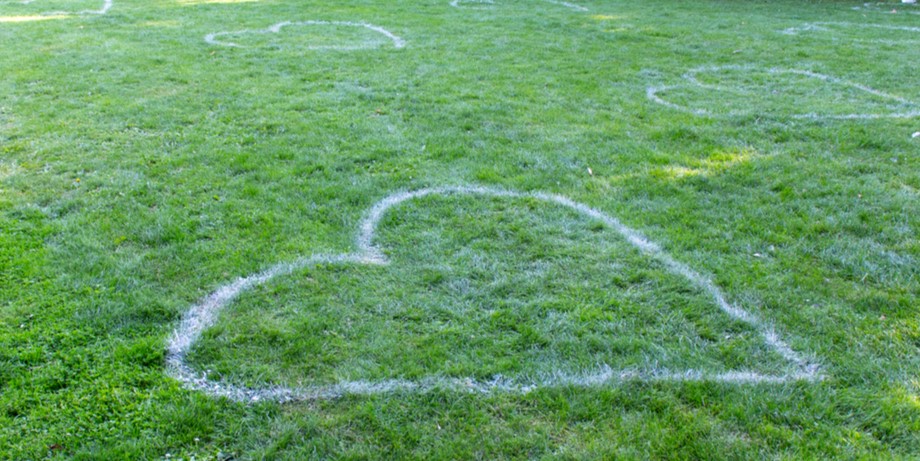Using art and performance can help with disaster response, a new report has told councils.
Backed by funding from the Arts and Humanities Research Council (AHRC), the interim report comes part way through an 18-month study that aims to demonstrate how artists and performers reacted swiftly to COVID-19, creating novel ways to engage communities with the local and national pandemic response.
Intended primarily for town planning and disaster preparedness experts, the interim report offers guidance on how the arts can help city councils address five key pandemic challenges – reaching communities, re-designing places, engaging people with public health messaging, managing perceptions of COVID-19 and vaccinations, and connecting people to alleviate isolation and loneliness.
DOWNLOAD THE REPORT

Bristol Hearts By GarethWilley | Shutterstock
Performance, Arts Practice and Emergency Planning
COVID-19 has underlined the vital role that arts practitioners play in identifying and responding to local and city challenges both creatively and at speed. Throughout the pandemic, artists, arts organisations and networks have been responding imaginatively to restrictions, rethinking familiar places and practices, and creating entirely new modes of engagement with local and city communities.
Over the past nine months Northumbria University’s Dr Patrick Duggan and Brunel University London’s Dr Stuart Andrews have been working with strategic decision-makers in hazard mitigation, sustainability and resilience from Bristol, Glasgow and Newcastle City Councils, as well as with artists and arts organisations, to explore ways that artistic practice and research might inform hazard mitigation planning in UK cities for the ongoing pandemic and potential future crises.
In the new report, they argue that cities with developed creative infrastructures and cultural life are already prepared to tackle crises because they are likely to have creative and engaging means to intervene in pandemic responses.
Reworking Places
During the research, academics identified a powerful example in Bristol, where the city’s ‘hearts in parks’ – giant, socially distanced hearts painted on the grass – proved to be an engaging way of encouraging people to enjoy green spaces safely. This simple yet appealing intervention sparked a flurry of social media engagement, further promoting physical distancing in the city, while simple circles painted in other cities’ public spaces were found to be less effective.
“Performative, playful and creative interventions in cities during the pandemic invite new ways of encountering with public safety protocols that are engaging and, potentially, even fun. This offers opportunities for innovative thinking in emergency planning,” explained Dr Duggan, an Associate Professor of Performance and Culture at Northumbria University.
In another compelling case, Slung Low, an award-winning theatre company in Holbeck, Leeds, allowed for moments of joy in a challenging period of restricted living. Early in the UK’s first lockdown, the company curated a street exhibition, offering physically distanced entertainment to those in the area. The exhibition was made up of pictures created by local residents that were attached to lampposts for people to discover during their daily exercise.
The same company also hosted a volunteer-led foodbank, and in June 2020 they produced a COVID-secure outdoor theatre performance. Family bubbles watched from individual tents and listened in through headphones as actors performed on the back of a flatbed truck in a carpark.
Dr Andrews, a Lecturer in Theatre at Brunel, reflected “A key element of this research is that it focuses on arts and emergency planning practices that are already operating in cities. The work of the project is to identify these practices and invite practitioners from these apparently separate fields to join us in a conversation, where we begin to explore ways of thinking differently about pressing challenges. The report shares this process and our initial findings beyond our case study cities and invites colleagues in and beyond these cities to get in touch to reflect on the work.”
Creative approaches to public health messaging
Through interviews and committee meetings with officers from Bristol, Glasgow and Newcastle City Councils, as well as gathering anecdotal and observational evidence, the researchers found that conventional municipal COVID-19 signage was not always effective. The researchers identified examples of arts practice that reworked public health messaging to emphasise creative engagement with the needed message.
Outside BALTIC Centre for Contemporary Art, an art gallery on the bank of the River Tyne in Gateshead, words from public messaging have been included in a public artwork painted on the flagstones: ‘Hands, Face’, ‘Save’. Participants can observe the signs but also encounter them through following the swirling lines of the artwork. The artwork, Rainbow’s End by Zoe Allen and Allan Dixon, both fragments familiar public health messaging but also invites new readings of the familiar words and places them in relation with other messages about climate emergency and the fate of the bees.
In Glasgow, The Hidden Gardens provide urban greenspace where people can escape the busy city streets. Here, a reminder of Covid rules and measures could be found illustrated on a chalkboard, partially hidden behind planting for visitors to discover on arrival. The interactive nature of this approach was observed to be effective in inviting people to read and take note of the guidance.
Through the next months of the project, the team will be engaging in conversation with colleagues in the arts and those in emergency response and resilience preparedness about the findings and they will reflect on their potential usefulness in developing city pandemic strategy.
For more information about the project please visit www.performingcityresilience.com
Reported by:
Press Office,
Media Relations
+44 (0)1895 268965
press-office@brunel.ac.uk